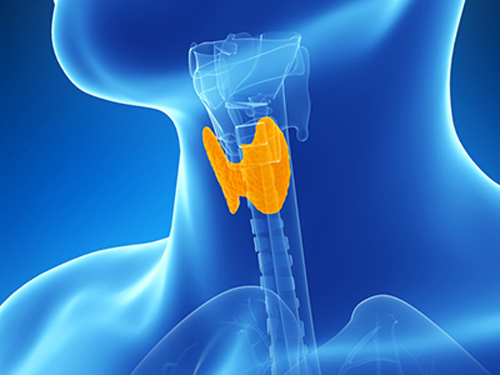Dr Richa Sharma, Dr Amit Basnotra
Chances for pregnancy without major complications and the subsequent birth of healthy children are closely related to both the condition of the patient before treatment and the chosen treatment modality itself. The reader may find the chapter concerning preconception care especially informative. Patients will certainly benefit from the more integrated perspective of the period before and after conception.
The majority of women entering an in vitro fertilization (IVF) program are fit and healthy. Care is therefore primarily focused on helping the couple to achieve their reproductive ambitions. However, the increasing tendency to delay childbirth means that a greater proportion of women embarking on IVF are presenting with a concurrent condition that may have implications for IVF management and outcomes.
The modern fertility specialist has an important role in preparing the couple for pregnancy, and counseling those who fail to conceive.
INTRODUCTION-
The female reproductive system is a dynamic system with morphological, biochemical and functional states, with a long-term (monthly) rhythm as well as short-term (minute to minute) fluctuations. Complex (neuro-)regulatory mechanisms are involved in the interplay between the pituitary and the ovary. This system is generally referred to as the hypothalamic– pituitary–ovarian axis (HPO axis).
The hypothalamus and its neuroendocrine communications constitute the central regulatory organ in the HPO axis. This in turn implies that disturbances in other HPO axis end-organs might induce disturbances upstream in the axis. Pregnancy may occur in the setting of endocrine diseases or may reveal these conditions for the first time. Management of pregnancy in these circumstances is challenging and requires a high degree of vigilance on the part of treating physicians.
Optimizing care and preparation prior to pregnancy, and adopting a multidisciplinary approach, can improve outcomes in these patients .
MANAGEMENT OPTIONS –
Growth Hormone excess-
* Acromegaly is associated with a spectrum of endocrine disturbances as well as with cardiac and pulmonary disease. This should be tested for, and glucose status should be optimized prior to commencing IVF.
* IVF medicines in itself does not seem to affect the disease.
* Acromegaly is associated with increased maternal morbidity (gestational diabetes, hypertension, tumor growth or necrosis), and fetal morbidity and mortality especially, during pregnancy.
Hypothalamic Pituitary Adrenal axis-
* Hypocortisolism may ameliorate during IVF hyperstimulation, and therefore careful control and substitution of adrenal function is a necessity.
* Hypercortisolism may exacerbate during IVF and the subsequent pregnancy, and hence adrenal function should be monitored regularly.
Medical or surgical treatment should be considered prior to commencing IVF.
* In congenital adrenal hyperplasia, hyperandrogenism should be corrected prior to initiating IVF treatment. During pregnancy, special attention should be paid to the sex of the fetus and whether glucocorticoid treatment is indicated.
HPT axis-
(1) Since hypothyroidism may ameliorate and hyperthyroidism might exacerbate during ovarian stimulation, close and tight control of thyroid function is a necessity during IVF and the subsequent pregnancy. The final goal of such an approach should be a euthyroid status. Hyperthyroid patients especially are prone to iatrogenic hypothyroidism, which is associated with fetal maldevelopment and mortality.
* During ovarian hyperstimulation, one might encounter reduced luteal phase LH serum levels. Moreover, ovarian hyperstimulation induces mild changes in thyroid function especially during the luteal phase and in early pregnancy. Hypothyroidism is associated with an impairment of fetal brain development due to insufficient transfer of maternal thyroid hormones to the fetoplacental unit.
* Screening for thyroid antibodies in euthyroid women with recurrent IVF failure appears to make sense, since these autoantibodies seem to be distinct and independent markers for reproductive failure.
Hyperprolactinemia-
*Excessive prolactin secretion impairs ovarian function, causing anovulatory subfertility. Hyperprolactinemia might be more frequent in infertile women.
* Prolactin serum levels should be within the normal range prior to initiation of the IVF cycle, and this can be accomplished through either medical or surgical treatment. Ovarian hyperstimulation during IVF induces transient hyperprolactinemia, which is associated with a better treatment outcome.
* Prolactin determinations are not particularly helpful during pregnancy.In patients with previous microadenomas, enlargement to the point of symptom occurrence is very rare, in contrast to patients with macroadenomas, in whom symptomatic growth is more common, and reinstitution of bromocriptine therapy may be necessary.
Panhypopituitarism-
* Panhypopituitarism is associated with a spectrum of endocrine disturbances, which should be tested for, and subsequent substitution is mandatory prior to commencing IVF.
* Ovarian hyperstimulation should make use of FSH as well as LH. Cotreatment with conjugated estrogens might be worth considering.
Fertility treatment must strive for singleton pregnancies, with application of particularly strict criteria to avoid twin pregnancies.
* Women with hypopituitarism have high-risk pregnancies, perhaps because of a uterine defect secondary to endocrine deficiency. Early elective Cesarean section is probably warranted in this group. Finally, pregnancy in women suffering from this disease is associated with an increased risk for maternal morbidity and mortality.
Diabetes mellitus-
* Tight control of blood glucose levels and adjustment of diet, exercise and insulin to normalize carbohydrate metabolism is mandatory prior to IVF treatment.
* In both IDDM and NIDDM, adjustment of carbohydrate metabolism and insulin sensitizers decrease the amount of exogenous FSH needed in ovarian hyperstimulation. Ovarian hyperstimulation might worsen the insulin resistance, and hence might induce hypo- or hyperglycemic episodes in these diabetic patients.
* Normalization of blood glucose levels reduces the major risks associated with diabetes mellitus and pregnancy. The rate of adverse maternal and fetal outcomes is greater in NIDDM compared with IDDM.
(The authors are Senior IVF and Fertility Expert Delhi, and Senior Gastroentrologist Delhi NCR)
Trending Now
E-Paper


